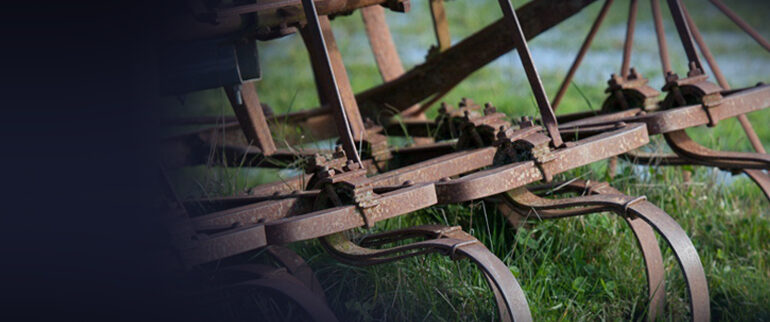Advancements in heavy equipment play a critical role in ensuring that agriculture and food production is sustainable for the world. From horses pulling wagons to modern-day combines, the evolution of farm equipment has played a vital role in the agriculture industry.
The development in technology has not only helped speed up the overall farming processes, but farming equipment is essential for decreasing the amount of manpower needed for each harvest season and increasing production overall.
First, let’s recognize a few of the pioneers and inventors of farming machinery:
- In 1794, Eli Whitney created the cotton gin, which separated seeds, hulls, and other unwanted materials from cotton after it had been picked.
- In 1831, Cyrus H. McCormick developed the first commercially successful reaper, a horse-drawn machine that harvested wheat.
- In 1837, John Deere invented the self-polishing cast steel plow, improving the iron plow.
- In 1842, the first grain elevator was built by Joseph Dart.
- In 1878, a New Jersey woman named Anna Baldwin invented the first suction milking machine, which revolutionized the industry.
It’s incredible to see how far the evolution of these essential pieces of equipment has come, and be sure to read more in-depth descriptions of these early inventions here. We also had the opportunity to sit down with the late Bob Miller, who also discussed the various items used on his family farm in Wisconsin from 1927-present day in this recently released whitepaper, Then vs. Now: Memoirs from the Miller Family Farm; check that out here.
And thanks to these early inventions, today’s modern agriculture has adopted tools and digital technologies that have significantly improved the way farmers can manage their crops and fields. Here are five technologies that have been added to machinery that has made farming more efficient and safer:
- GPS software and GPS agriculture
- Satellite imagery
- Drone and other aerial imagery (Check out our podcast with Dr. Scott Irwin where we discuss the biggest evolution in crop agriculture here)
- Farming software and online data
- Merging datasets
The introduction of satellites into the world of agriculture has helped make farming decisions easier and has helped make farming more efficient. Satellites allow tractors to be more efficient with GPS technology to help plant and spray crops more precisely. Satellite imagery is also now used in the USDA’s research when putting out yield estimate reports by using satellite imagery to try and estimate the health of the crop.
Technological updates in drones and other intelligent software have allowed farmers to use artificial intelligence to help make decisions for the crop as the year goes on. Agriculture companies have developed apps that can gather hundreds of data points for every field someone farms to help farmers make time-critical decisions much easier. Artificial intelligence can make decisions in seconds that used to take hours of looking over data from the soil composition, seed variety, to when to spray the chemicals.
Not only does this information help each field for that year, but it helps farms become more sustainable and produce more consistent crops year after year. Reducing carbon emissions by being more efficient with tractors, combines and planters will help farming be “greener” moving forward. AI also helps benefit both farmers and the farming process by reducing runoff of chemicals and fertilizers as well as staying in the soil.
The continued development of technology and equipment is crucial now, more than ever, to help farmers produce the needed quantities to feed the world. With a global population projection of 10 billion people by 2050, agricultural production will need to increase by at least 60%, according to the Food and Agriculture Organization (FAO) from current levels. Will it be equipment, seed / chemicals, or simply mother nature that helps us reach a 200 bu per acre corn crop in the years ahead??
Be sure to download how equipment works to feed the world in our infographic here.
CONTACT AN AG SPECIALIST TODAY
Whether you’re a producer, end-user, commercial operator, RCM AG Services helps protect revenues and control costs through its suite of hedging tools and network of buyers/sellers — Contact us today to speak with an ag specialist at 888-875-2110!

